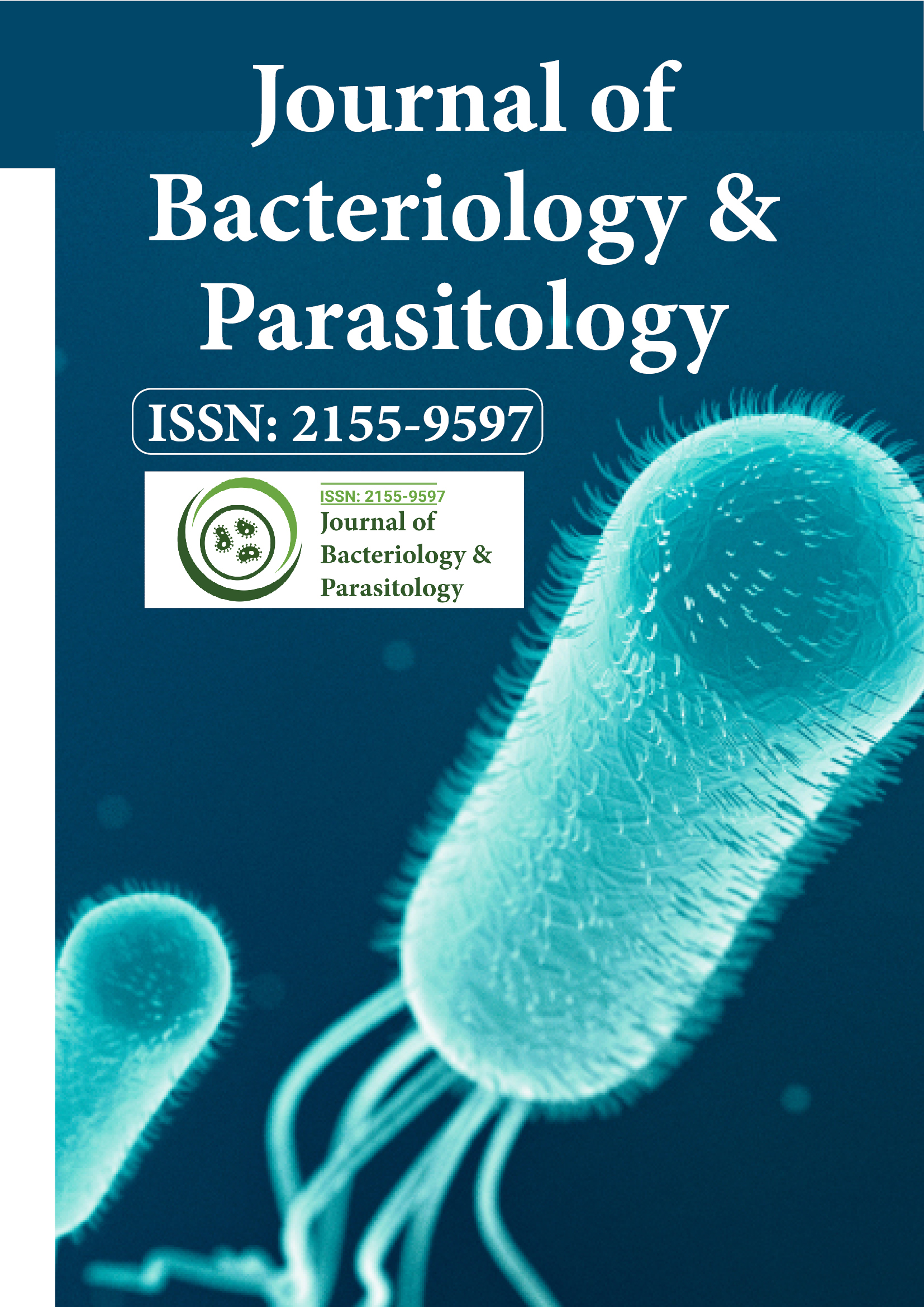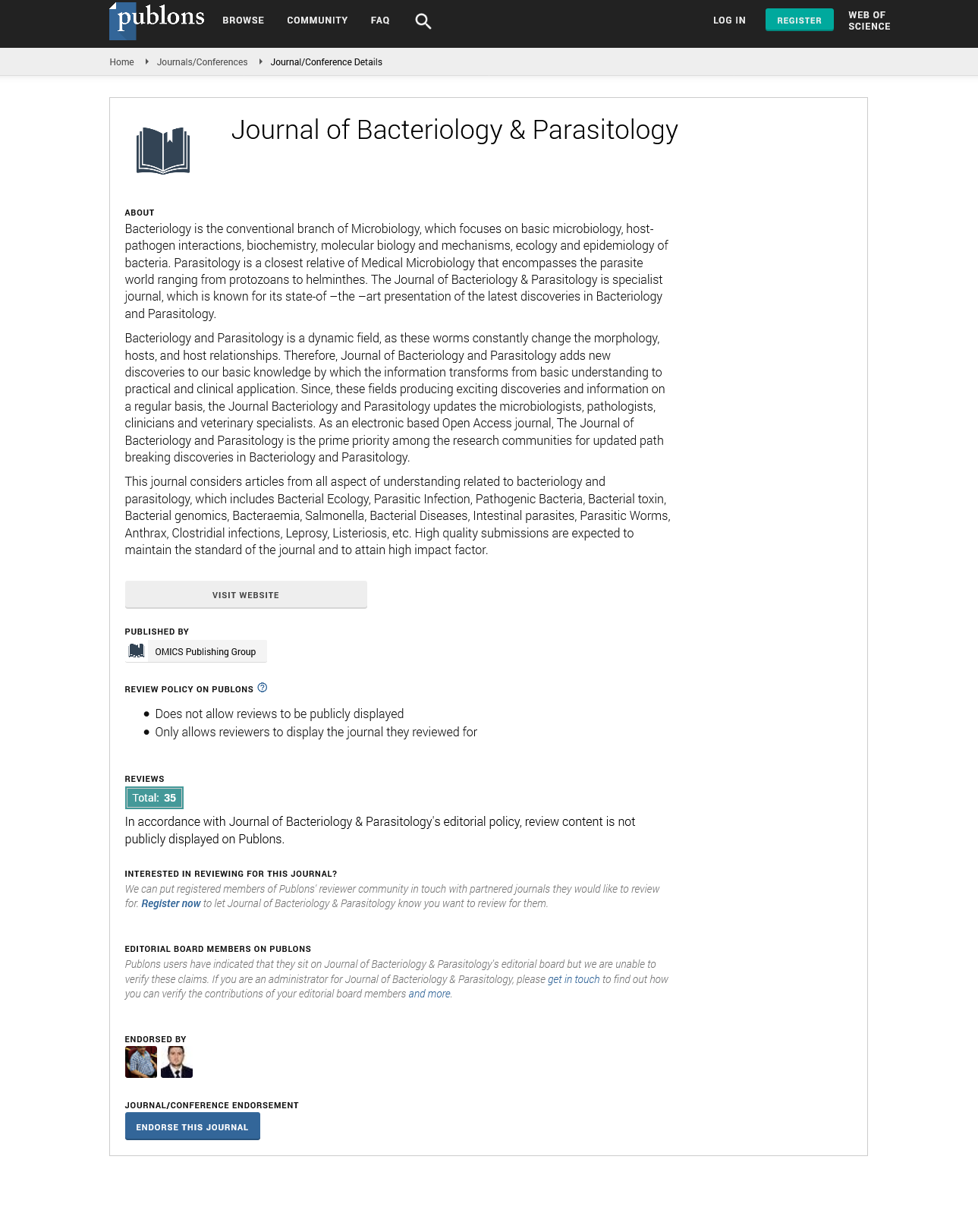Indexed In
- Open J Gate
- Genamics JournalSeek
- Academic Keys
- JournalTOCs
- ResearchBible
- Ulrich's Periodicals Directory
- Access to Global Online Research in Agriculture (AGORA)
- Electronic Journals Library
- RefSeek
- Hamdard University
- EBSCO A-Z
- OCLC- WorldCat
- SWB online catalog
- Virtual Library of Biology (vifabio)
- Publons
- MIAR
- Geneva Foundation for Medical Education and Research
- Euro Pub
- Google Scholar
Useful Links
Share This Page
Journal Flyer

Open Access Journals
- Agri and Aquaculture
- Biochemistry
- Bioinformatics & Systems Biology
- Business & Management
- Chemistry
- Clinical Sciences
- Engineering
- Food & Nutrition
- General Science
- Genetics & Molecular Biology
- Immunology & Microbiology
- Medical Sciences
- Neuroscience & Psychology
- Nursing & Health Care
- Pharmaceutical Sciences
Opinion Article - (2025) Volume 16, Issue 2
ParasiteâVector Ecology and Disease Transmission Dynamics
Priya Malhotra*Received: 24-Mar-2025, Manuscript No. JBP-25-29945; Editor assigned: 26-Mar-2025, Pre QC No. JBP-25-29945; Reviewed: 09-Apr-2025, QC No. JBP-25-29945; Revised: 16-Apr-2025, Manuscript No. JBP-25-29945; Published: 23-Apr-2025, DOI: 10.35248/2155-9597.25.16.539
Description
The spread of many parasiteâ?borne afflictions depends on interaction among parasite species, insect or other invertebrate carriers, and environment. Transmission occurs when parasite stages develop within a vector, or when carriers transport infective forms to humans or animals. For example, malaria requires development of Plasmodium inside mosquitoes; filarial worms mature within mosquitoes or flies; trypanosomes live in tsetse flies until passed to mammals. Each stage imposes demands: surviving inside vector midgut, navigating immune defenses of the carrier, then being transmitted via bite, food, or water.
Vector ecology matters: abundance, feeding preferences, lifespan, and habitat affect how effectively disease spreads. Mosquitoes that feed indoors, rest in houses, and live many days may spread malaria more efficiently than those with short lifespans or outdoor feeding habits. Similarly, sandflies that breed near human dwellings provide opportunities for Leishmania transmission. Environmental changes such as deforestation, irrigation, urbanization may modify vector habitats, increasing contact between vectors and humans. Climatic shifts also alter rainfall patterns and temperature, influencing vector survival and breeding cycles.
Parasite adaptation to vector immune systems is complex. Some species produce surface proteins or manipulate vector’s gut microbiota to avoid destruction. Others adjust gene expression inside vector gut to resist oxidative stress or digestive enzymes. Successful transmission often depends on parasite’s capacity to migrate from gut to salivary glands (for malaria), or to be present in vector mouthparts or feeding appendage. That requires precise timing and biochemical coordination between parasite life stage and vector physiology.
Hostâ?parasite interactions extend to human or animal immune responses. After transmission, parasites may face immediate attack by immune cells, neutralizing antibodies, complement. Some express antigenic variation so immune system cannot easily detect consistent targets. For instance, Trypanosoma brucei frequently changes surface glycoproteins. Leishmania hides within macrophages; immune suppression or modulation allows survival. Chronic infection may lead to tissue damage or organ dysfunction over long periods.
Control strategies include managing vector populations by reducing breeding sites, using insecticide treated nets, spraying, or employing biological control agents such as predatory larvae or parasitic wasps. Use of insect repellents and wearing protective clothing helps individuals avoid bites. Environmental management such as draining standing water or improving housing construction reduces vector habitats. Education of communities regarding nighttime exposure, recognizing early symptoms, and seeking care are essential.
Monitoring disease transmission relies on surveillance that tracks vector density, infection rates in vectors, cases in humans. Tools include trapping insects, dissecting to detect parasites, molecular assays to find parasite DNA. Disease mapping helps locate highâ?risk zones; temporal tracking reveals seasonal peaks. Data support allocation of resources such as distributing bed nets before malaria season or targeting spraying in outbreak regions.
Treatment of infected individuals reduces reservoir of parasites available to vectors. Without effective therapy, infected humans or animals may persist in harboring parasites that vectors pick up. Resistance to treatment is of grave concern; for protozoal parasites, drug efficacy may vary regionally. For helminths, mass drug administration helps reduce worm burden in populations. Integrated approaches combining vector control, treatment, environmental change yield better outcomes than single measures.
Conclusion
Recent investigations study vector microbiome influences: bacteria living within mosquitoes may inhibit parasite development. Release of mosquitoes carrying symbiotic organisms or genetically modified individuals that resist parasitic infection are being tested. Vaccine efforts focus on interrupting parasite development inside vector or the initial infection upon human exposure. Novel diagnostic tools aim to be low cost, rapid and usable in remote settings. As global travel and climate variability shift parasite and vector distributions, adaptability of control programs becomes important.
Citation: Malhotra P (2025). Parasite Vector Ecology and Disease Transmission Dynamics, Treatment. J Bacteriol Parasitol. 16:539.
Copyright: © 2025 Malhotra P. This is an open-access article distributed under the terms of the Creative Commons Attribution License, which permits unrestricted use, distribution and reproduction in any medium, provided the original author and source are credited

